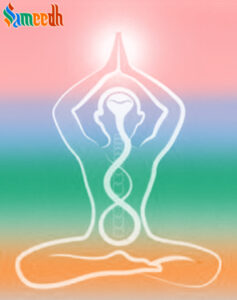The Matsyendra Samhita is an important text in the Hatha Yoga tradition, attributed to Matsyendranath, the legendary founder of the Nath tradition. It is considered one of the earliest texts on Hatha Yoga and is revered for its teachings on yoga philosophy, practices, and techniques.

The Matsyendra Samhita is an important text in the Hatha Yoga tradition, attributed to Matsyendranath, a legendary figure in Hindu mythology and the founder of the Nath tradition. The text contains teachings and instructions on various aspects of yoga practice, philosophy, and spirituality. The text is believed to have been composed several centuries ago, although precise dating is challenging due to the oral tradition through which it was transmitted.
While the complete contents of the Matsyendra Samhita may vary across different versions and translations, some of its key teachings include:
- Asans (Yogic Postures): The Matsyendra Samhita provides guidance on practicing different yogic postures or asanas. These asanas are aimed at promoting physical health, flexibility, and balance, as well as stimulating the flow of energy (prana) within the body. Examples of asans mentioned in the text may include Padmasan (Lotus Pose), Siddhasan (Adept’s Pose), and Matsyendrasana (Lord of the Fishes Pose).
- Pranayama (Breath Control): The text offers instructions on various breathing techniques or pranayama practices. Pranayama techniques are utilized to regulate and control the breath, which is believed to influence the flow of vital energy throughout the body. Practicing pranayama can help calm the mind, increase vitality, and purify the energy channels (nadis).
- Bandhas (Energy Locks): Matsyendra Samhita teaches about the bandhas, which are subtle energy locks or seals performed during yoga practice. The bandhas involve contracting and releasing specific muscles to redirect and regulate the flow of prana within the body. Examples of bandhas include Mula Bandha (Root Lock), Uddiyana Bandha (Abdominal Lock), and Jalandhara Bandha (Throat Lock).
- Mudras (Gestures): Mudras are symbolic hand gestures or seals used in yoga and meditation to channel energy and enhance concentration. The Matsyendra Samhita may contain instructions on practicing various mudras to facilitate the flow of prana, balance the subtle energy centers (chakras), and deepen meditative states.
- Kriyas (Cleansing Techniques): The text may include descriptions of kriya practices, which are purification techniques aimed at cleansing the physical body and subtle energy system. Kriyas may involve practices such as neti (nasal cleansing), dhauti (internal cleansing), and basti (colon cleansing), among others.
- Meditation and Yoga Philosophy: Along with practical instructions, the Matsyendra Samhita may also contain teachings on meditation, yoga philosophy, and spiritual insights. These teachings may explore concepts such as the nature of the self (atman), the path of self-realization (moksh), and the union of individual consciousness with the universal consciousness (samadhi).
One of the distinguishing features of the Matsyendra Samhita is its emphasis on the importance of the guru-disciple relationship and the necessity of the practitioner’s dedication and discipline on the path of yoga. It also incorporates elements of tantra, acknowledging the subtle energy body and the role of kundalini, the dormant spiritual energy, in the process of awakening.
While the Matsyendra Samhita is not as well-known as some other Hatha Yoga texts like the Hatha Yoga Pradipika or the Gheranda Samhita, it holds a special place in the Nath tradition and is studied and revered by practitioners seeking deeper insights into the ancient science of yoga.
As with many ancient texts, the Matsyendra Samhita has undergone various interpretations and revisions over the centuries, resulting in different versions and commentaries. Nonetheless, it remains a valuable resource for those interested in exploring the rich tradition of Hatha Yoga and its profound spiritual teachings.